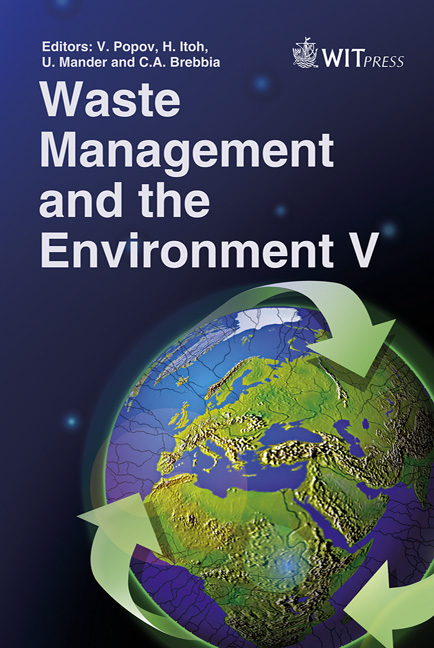Innovative Technique For The Control Of NOx Formed In Combustion Processes
Price
Free (open access)
Transaction
Volume
140
Pages
10
Page Range
11 - 20
Published
2010
Size
362 kb
Paper DOI
10.2495/WM100021
Copyright
WIT Press
Author(s)
N. Verdone, M. Scarsella, G. Liuzzo & P. De Filippis
Abstract
NOx formed in combustion processes is mainly constituted by nitrogen monoxide (NO) while nitrogen dioxide (NO2) accounts for marginal concentration only. However, being NO2 characterized by higher water solubility and equilibrium constant in the neutralization reaction operated with basic reactants, it is easily removed via dry or wet processes. On this basis an innovative process alternative to the conventional DeNOx SCR and SNCR can be envisaged, where the oxidation of NO to NO2 makes the successive abatement of the oxidized fraction relatively easier. The scope of the work is the study of the oxidation of NO to NO2, considered as the controlling step of the proposed process, operated with hydrogen peroxide (H2O2). A mathematical model of the oxidation has been developed in the Chemkin v. 3.7 environment, describing the gas phase kinetics in the energy recovery section of a generic combustion process through the Miller and Bowman (1989) kinetic mechanism. The base model has been improved with the introduction of the oxidation steps induced by the injection of hydrogen peroxide drawn from the literature. The NO oxidation reaction was investigated in a temperature range of 250-700°C, with a 20% excess of oxidizing agent with respect to the NO/oxidizer oxidation reaction stoichiometry. The experimental maximum conversion results are less than the calculated one of about 20%. The results of the model have been validated through experimental runs conducted in a bench scale pilot plant. Keywords: DeNOx, flue gas treatment, NOx chemistry.
Keywords
DeNOx, flue gas treatment, NOx chemistry





